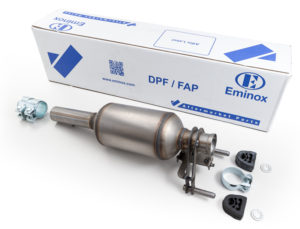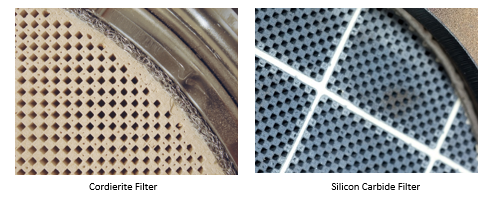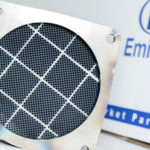Diesel Particulate Filters (DPFs) are now fitted on modern diesel vehicles to protect people’s health as they produce Particulate Matter (PM), one of the most dangerous of all air pollutants.
Particulate Matter is made up of tiny particles so small they become airborne and can be breathed in causing damage to the heart and lungs. It is the ultra-fine particles, those less than 10 microns (PM10) that are of most concern because they penetrate deep into the lungs. PM10 is a threat to health even in low concentrations and the World Health Organisation (WHO) has classed diesel exhaust as carcinogenic.
Strict emissions limits have driven the widespread adoption of high performance DPF’s, which trap more than 90% of PM, including ultra-fine particles. Removing a DPF not only means it will emit dangerous emissions, but also the vehicle becomes illegal for road use. From May this year, MOTs will require specific checks to confirm that a DPF is present, this will go much further than the visual checks of the past and will include new detection technology. The potential penalties for removing a DPF are fines of up to £1,000 for a car or £2,500 for a light goods vehicle. 
Once PM is trapped by a DPF, it is removed though a process called ‘regeneration’ which only happens when the exhaust gas is hot. Many cars and LCVs are designed with a ‘regeneration strategy’, which increases temperature to remove particulate matter blockages. However, DPF’s still accumulate incombustible ash over time and can become blocked more quickly where there is a large amount of low speed, low temperature driving. When this happens, a main dealer replacement may be the most obvious solution, but there are alternative, more cost effective options; either cleaning the DPF or choosing an aftermarket replacement. Emissions specialist Eminox and DPF cleaning specialist Ceramex, outline the pros and cons of these alternatives.
Aftermarket Replacement DPF
Cleaning a DPF will take at least three days, whilst an aftermarket replacement can have the vehicle back on the road within 24 hours. Neil Koston, Aftermarket Product Manager at Eminox, highlights some important considerations when choosing a replacement DPF:
“It is important that it has been proof-fitted on the vehicle that it is going on. Other features to look out for are that it matches the OE performance and should be ‘type’ approved to the latest European legislation.
“A silicon carbide filter is the best choice because it can withstand temperatures exceeding 2700°C. It is for this reason that we use a silicon carbide substrate in all our DPFs, wrapped in a mat to prevent it from moving and to avoid exhaust gas flowing around the filter. The substrate and matting are then ‘canned’ by squeezing the wrapped substrate into a stainless steel body.”
Where a DPF is damaged, not just blocked, an aftermarket DPF is the only alternative to an expensive OE part.
“Another common issue with replacement DPFs is choosing the wrong kind of filter. For example, if a cordierite filter is used to replace a silicon carbide filter in a system with a high temperature regeneration strategy, the regeneration will cause the filter to exotherm (melt and stop functioning). That’s why a silicon carbide filter is the best choice because it can withstand temperatures exceeding 2700°C.”

DPF Cleaning
Cleaning is an option where there isn’t a readily available replacement DPF, especially as an OE DPF would be very expensive. Our sister company, Ceramex, provides a DPF cleaning se
rvice.
DPF cleaning takes 3-5 days including logistics, although it is usually returned to the garage on day three. Another reason why some workshops and drivers prefer cleaning, aside from the significant cost saving compared to an OE route, is that it is the original unit being fitted back onto the vehicle, so no fitment issues. Of course, a replacement DPF that has been proof-fitted overcomes this concern.
Identifying a reputable company that can clean DPFs can be difficult and there are some important questions you need to ask. These include: What credentials and proven track record do they have? Will the service remove soot and ash (ash is none combustible so cannot be ‘burnt’ off. If it is not removed it can cause thermal expansion, such as cracking of the substrate).
It’s also worth asking for documentation that shows how the filter has been cleaned and to what standards as well as post cleaning reports, which Ceramex provides as standard.
Where an aftermarket DPF is not available, specialist cleaning of the DPF is the only alternative to an expensive OE part.
The choice between replacing or cleaning a DPF will depend on the priorities of both the workshop and the customer – cleaning is often the cheapest alternative, but aftermarket replacement is the fastest. Both options can offer significant savings compared to an ‘original equipment’ replacement from a main dealer.
The combined capabilities of Eminox and Ceramex, both part of the Hexadex Group, offer a cost effective solution for almost any blocked or damaged DPF.










